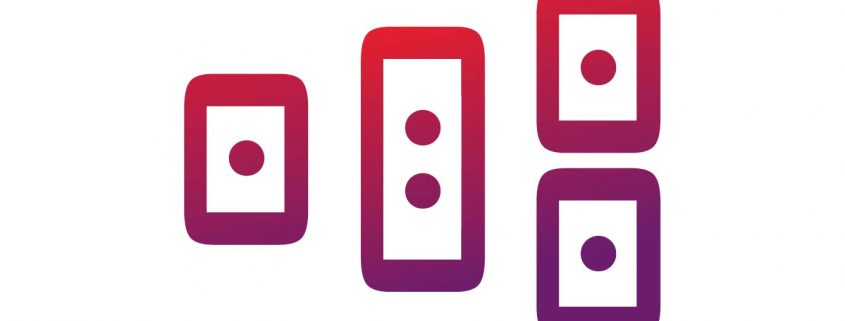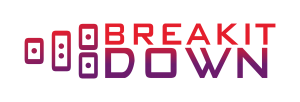Break it Down: Refreshing Science Communication
Break it Down (www.breakitdown.eu) is a Belgian science communication collective of rebel scientists, storytellers and designers, each with their own field of expertise. Break it down helps you to break down your message, communicate it to the world and increase your impact.
Science communication is on the rise! Various Scicomm agencies are popping up like mushrooms across the globe! In December, I (Pieter Torrez from Crastina and Scigrades ) got in touch with biochemical engineer Winnie Poncelet, founder of the two non-profits Do-It-Yourself lab Reagent in Ghent and Ekoli that provides science workshops for children and minorities. Winnie told me about his plans to start up a collective of science communicators with different kinds of expertises, Break it Down was born! Interested by the idea of working in a collective I invited the founders Winnie, Niek and Jasper to have a talk about their future plans!
- Hi Winnie, Niek and Jasper! Can you tell me a bit more about Break it Down?
Break it Down is a young up-and-coming science communication collective. We offer a unique approach; where most science communication is centered around the explainer, the scientist, we work the other way around. We start from the listeners: the colleague, the citizen, the classroom. How do you grab their attention, make them not only understand, but care?
We go further than merely explaining science, we want to engage people, make them feel involved.
Science communication is not a one-way street for us. We look for mutual learning, so that the scientist also gains a lot more from communicating his research.
Our offer comes from unique experience in novel ways of breaking science out of its natural habitat and opening it up to a broader audience. The Break it Down crew has been long involved – and still is- in several innovative nonprofit science and education initiatives.
- How can Break it Down help scientists to become better science communicators?
Today, researchers and organisations can rely on us for a range of services:
- Information design
- Workshops on storytelling in science, interdisciplinary collaboration and hacking your research
- Copywriting
- Event organisation
Through our partner Ekoli, you can also count on our expertise for innovative projects in education.
- How is Break it Down connected with the two non-profit initiatives Ekoli and ReaGent?
The Break it Down members are initiators and volunteers at Ekoli and ReaGent. ReaGent started as an open biolab where people from any background could experiment with biosciences. In the lab they can find all the necessary professional equipment and there’s always specialised people around who can help them with the scientific theory. The community also hosts events and workshops on a wide range of scientific topics.
The citizen scientists in the ReaGent lab gravitated towards projects on education for children. We noticed a need for qualitative and practical bioscience content in education and we also saw many groups who didn’t have access to science at all, in any form. That’s why we decided to launch Ekoli, a non-profit entirely dedicated to bringing biosciences to underprivileged groups and school children.
After a while we realised we had learned enough about science communication to be able to help researchers and organisations as well. The idea of Break it Down was obvious: it’s a way for us to make a living doing what we love and to keep engaging ourselves as volunteers for the non-profits. In this way, the clients of Break it Down are also supporting a good cause.
- Can you give three tips of advice to scientists on how they can foster excitement about their research?
What does it mean to them – Understanding what your audience is occupied with serves multiple purposes. Involving their world helps you construct a narrative that will resonate with them. Telling a story with their everyday lives, shows you are willing to invest time and effort, garnering respect from your audience. And constantly changing your tale will keep you on your toes creatively and will gain you new insights into your own research.
Death to the details – Dare to let go. There are some surefire ways to lose your audience and listing details is definitely one of them. They confuse and direct your listeners attention inward, since they need time to analyze these intricacies. The energy this requires will leave them exhausted in no time, ensuring that they will miss the important stuff. Go broad and go big!
Nuggets – People like being smartasses. If they can share something none of their friends know or if they can gain and preach an insight new to their social group, for you to provide that is very valuable. See if you can distill a bite-sized fact from your research and guarantee your spot in the grapevine.
- What are the future plans of Break it Down?
We will keep innovating at the cutting edge of science communication and education. There’s plenty of projects in development at the moment, both on a regional, national and European level. All the experience we gain will be translated into unique services for researchers and organisations on how to communicate science more effectively and increase their societal impact. We look forward to cooperate with anyone who shares our passion!
Follow Break it Down on Twitter
Follow Break it Down on Facebook
- Break it Down: Refreshing Science Communication - February 8, 2017
- How to create clear and attractive graphs/illustrations? - September 5, 2016
- How platforms like External Diffusion can highly improve the outreach of your research paper - April 18, 2016
- How platforms like Clarafi can drastically improve your scientific visualization skills - April 6, 2016
- How social platforms like AcademicLabs can make it easier to find the right research partners and aim high - March 23, 2016
- How science communication agencies like Mediomix can enlarge the outreach of your research - February 29, 2016
- How Life Science Network can create networking opportunities for scientists - January 27, 2016
- German design team creates “Next Generation Scientific Poster” - December 13, 2015






Leave a Reply
Want to join the discussion?Feel free to contribute!